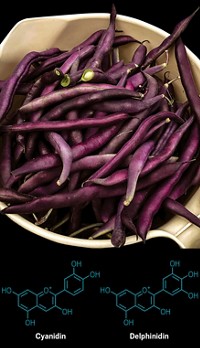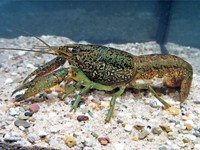Advertisement
Grab your lab coat. Let's get started
Welcome!
Welcome!
Create an account below to get 6 C&EN articles per month, receive newsletters and more - all free.
It seems this is your first time logging in online. Please enter the following information to continue.
As an ACS member you automatically get access to this site. All we need is few more details to create your reading experience.
Not you? Sign in with a different account.
Not you? Sign in with a different account.
ERROR 1
ERROR 1
ERROR 2
ERROR 2
ERROR 2
ERROR 2
ERROR 2
Password and Confirm password must match.
If you have an ACS member number, please enter it here so we can link this account to your membership. (optional)
ERROR 2
ACS values your privacy. By submitting your information, you are gaining access to C&EN and subscribing to our weekly newsletter. We use the information you provide to make your reading experience better, and we will never sell your data to third party members.
Environment
Newscripts
Comb collections: The sweet science of honeybee hives
by Laurel Oldach
July 1, 2023
| A version of this story appeared in
Volume 101, Issue 21
The buzz about town

How do you get a broad sample of a city’s microbiome? You could invest hours in wandering its streets with an air sampler. You could recruit volunteers to do the same en masse. Or you might ask the city’s consummate collectors: its honeybees.
Urban honeybees range within a few kilometers of their hives, drinking nectar and distributing pollen—and, along the way, amassing ambient microbes. Scientists, artists, and beekeepers teamed up with a lab at New York University to determine whether they could catalog those microbes (Environ. Microbiome 2023, DOI: 10.1186/s40793-023-00467-z). They found that hive debris—the clutter of dead insects, pests, pollen, and wax that collects at the bottom of a hive—was a rich source of microbial DNA.
In samples from around the world, the researchers detected—in addition to predictable bee microorganisms—microbes that grow in and on plants, mammals, and bodies of water. The bees picked up enough from their surroundings for scientists to detect city-specific signatures. Bees in Venice, Italy, carried fungi related to wood rot, while those in Tokyo carried the yeast that’s used to make soy sauce.
“Bees and people are ancient collaborators,” Tori Coleman, a beekeeper who worked on the project, tells Newscripts. “Being able to collaborate with bees as little collectors, or little environmental sensors, is really inspiring.”
Once in a blue honey
Certain hobbies lead to places that don’t sound like much fun. Shirley Harris, a beekeeper in North Carolina, once found herself in an apartment building’s laundry room, removing a honeybee hive from inside a wall.

When she pulled down the paneling and pulled out the comb, Harris was startled to find that parts of it were bluish. “I thought, what in the world? At first I thought something was wrong with it,” she tells Newscripts. The honey turned out to be fine, delicious even—just a little gaudier than usual.
Sometimes bees find colorful sugar sources near their hives. Brooklyn bees have been known to feed on maraschino syrup and produce red honey, and hives near an M&M factory in France once turned blue and green. But in the sand hill region of central North Carolina, bees occasionally produce blue or purple honey with no apparent assistance from food dye. Harris, now a state apiary inspector, says the phenomenon crops up roughly every 3–5 years in a few hives in her area.
“As far as I know there hasn’t been any empirical investigation into the phenomenon, so we don’t really know how or why it occurs,” says David Tarpy, an apiarist at North Carolina State University, in an email to Newscripts. But that hasn’t stopped locals from guessing.
In the 1970s, Tarpy’s predecessor, the late John Ambrose, linked the blue honey to bees’ feeding on the blossoms of sourwood trees grown in the aluminum-rich soil of the North Carolina sand hills—especially in dry years. In a magazine interview, he described a series of experiments in which bees’ acidic digestive juices changed the color of sourwood nectar. Newscripts notes that aluminum-anthocyanin complexes, which are responsible for the blue color of hydrangeas and delphiniums, can change color in response to acidity.
Ambrose published many apiculture studies, but nary a peer-reviewed report on his blue honey hypothesis. In the years since, other apiarists have advanced alternative theories, such as fungal contamination of the honey, or purple food sources like kudzu flowers or elderberries. But Tarpy says an analytical lab found no evidence for fungus, and Harris says bees don’t spend much time drinking kudzu nectar and cannot break into a grape or a berry on their own. “I’m leaning towards Dr. Ambrose being correct,” she says.
Readers interested in a mechanistic investigation may soon be in luck. “The last month, it has been really dry,” Harris told Newscripts in mid-June, “so we may make some purple honey this year.”
Laurel Oldach wrote this week’s column. Please send comments and suggestions to newscripts@acs.org.





Join the conversation
Contact the reporter
Submit a Letter to the Editor for publication
Engage with us on Twitter